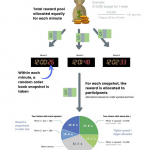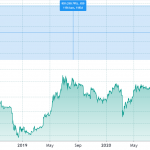Is offshore wind the next big thing?
It could be for the United States.
As global project costs continue to drop, America is building on the momentum of its first commercial offshore wind farm. The Block Island Wind Farm, off the coast of Rhode Island, is expected to produce enough electricity to power about 17,000 homes—and that’s just the beginning. According to a recent report from the U.S. Department of Energy (DOE) more projects are underway as four significant trends are emerging in this growing energy market.
1. A Robust U.S. Offshore Wind Pipeline
The United States is developing a robust pipeline of projects to ensure growth in the country’s nascent offshore wind market. As illustrated in the chart below, 28 projects, totaling 23,735 megawatts (MW) of potential installed capacity, are now in the works. Near-term activity is concentrated in the North Atlantic, but other projects are in various stages of development across the country, including the Great Lakes, the West Coast, and Hawaii.
U.S. offshore project pipeline by state as of June 2017.
2. Upscaling Wind Turbines: Bigger is Better
Proposed projects are incorporating the latest innovations in offshore wind turbine technology. The global trend of increasing size and scale has manufacturers building larger turbines (now up to 9 MW and rotor diameters of 538 feet) on advanced foundation designs in water depths of more than 200 feet.
This upscaling trend is driven by the need to minimize costs and maximize efficiency. Larger turbines are able to capture more energy, more efficiently per installation. Economies of scale also result in fewer technicians needed to service fewer (albeit larger) turbines.
3. Moving Farther Offshore to Deeper Waters
Constructing wind farms 30 miles off the coast is no longer unusual in Europe. This generally results in less potential for interference with sightlines from coastal vantage points, or with fishing, navigation and recreational boating areas. It also allows for larger projects and enables access to the more energetic and more consistent winds that are prevalent farther from shore. This allows the exploitation of vast U.S. offshore wind resources in deeper waters, where bottom-fixed foundations are not feasible.

Offshore wind floating substructure designs. Credit: Josh Bauer, National Renewable Energy Laboratory
4. Floating Wind Turbine Technology Expands Possibilities
One developing technology that enables construction in deeper water is a floating base or foundation. Instead of securing an offshore wind turbine directly to the bottom of a lake or ocean, the base is tethered to the seafloor and designed to float at depths greater than 165 feet. Floating technologies, already validated internationally by full-scale prototypes, will allow access to significant deep water wind resources near large energy markets where sites suitable for bottom-fixed offshore foundations may be limited, such as Maine, the West Coast, and Hawaii.
This article was originally published by the U.S. Department of Energy in the public domain.
Lead image credit: U.S. Department of Energy










